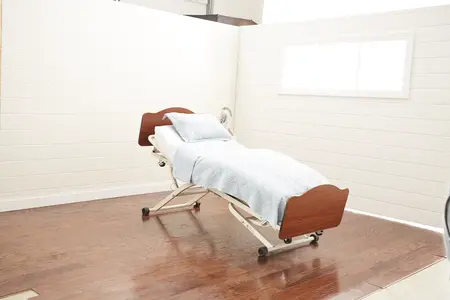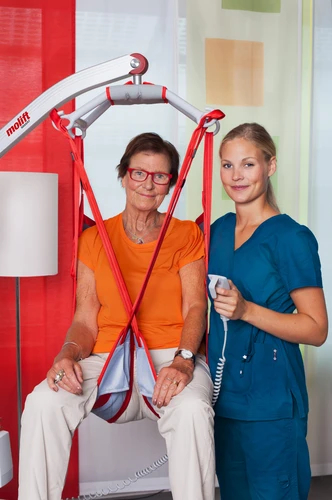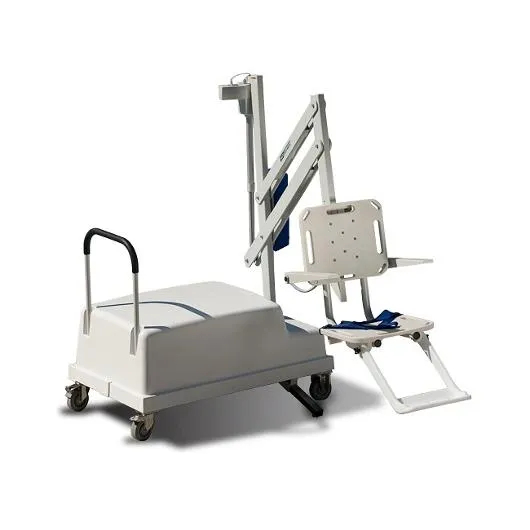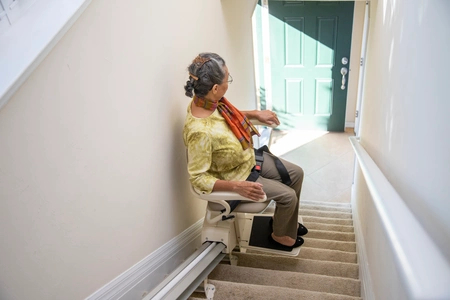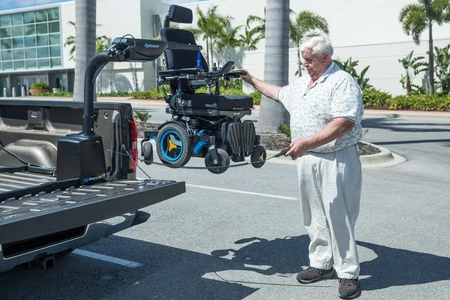When faced with the challenge of enhancing mobility for individuals with health concerns, patient lifts, also known medical lifts, stand out as indispensable tools. These devices, which range from manual and power patient lifts to sophisticated stand-up and heavy-duty lifts, not only provide essential support for patients, but also safeguard caregivers against injury. This guide aims to navigate the diverse landscape of patient lifts, ensuring that the best possible choice is made for those in need of assistance with daily movements.
Understanding and Selecting the Right Patient Lift
Patient lifts, including mobile patient lifts and patient lift slings, come in a variety of forms, each with specific features and applications designed to meet different needs.
- Manual Patient Lifts rely on hydraulic mechanisms, appreciated for their reliability and cost-effectiveness. They are ideal where electricity is unreliable or for occasional transfers.
- Power Patient Lifts offer the convenience of battery operation, which is particularly beneficial for frequent transfers and reducing caregiver strain.
- Professional Patient Lifts cater to healthcare facilities, with advanced features such as : superior technology which includes auto weight shut-offs, battery back-ups and scales for diverse medical environments.
- Stand-Up Patient Lifts are instrumental in rehabilitation, aiding patients who can bear some weight in standing and promoting independence.
- Heavy Duty/High Weight Capacity Patient Lifts are engineered to safely handle higher weight loads, ensuring comfort and security for bariatric patients.
- Overhead Track Lifts provide a permanent solution with a space-saving design, often installed in homes or medical settings for patients with long-term mobility needs.
Choosing the right patient lift involves assessing the patient's mobility level, the environment of care, and the physical capability of the caregiver. Matching the patient's weight and specific mobility requirements with the appropriate lift and lift sling is essential for safe and effective use.
Best Practices for Using Patient Lifts
- Comprehensive Training: Users must be fully trained on the correct operation of the lift and the selection of patient lift slings.
- Pre-Use Inspection: Prior to use, inspect the lift and sling for any signs of damage or wear.
- Correct Sling Use: Match the sling to the lift and the patient's weight, confirming it is approved by the lift's manufacturer.
- Weight Capacity Adherence: Never exceed the weight limits of the lift or sling.
- Secure Fastening: Ensure all clips, latches, and hanger bars are securely fastened during operation.
- Stable Positioning: Keep the base of the patient lift in its maximum open position for stability.
- Patient Preparedness: Verify that the patient is ready and not agitated before beginning the transfer.
Proper use of patient lifts not only improves the quality of care, but also protects against the physical strain often experienced by healthcare workers. The FDA has also put together a detailed patient lift safety guide for further reference. With these considerations in mind, the following sections will delve deeper into the maintenance of these essential devices and the legal frameworks governing their use.
Maintenance and Care for Longevity
- Regular Inspection: All patient lifts should be inspected regularly for signs of wear and tear, especially at common stress points such as the sling attachment, the boom, and the mast. For power lifts, battery life and the integrity of the charging system should be checked frequently.
- Sling Care: Patient lift slings must be examined for fraying, tears, and seam integrity. They should be washed according to the manufacturer's instructions, which often specify using mild detergents and avoiding harsh chemicals that can degrade fabric strength.
- Hydraulic Fluid: For manual lifts, the hydraulic fluid levels should be checked and topped up as required to ensure smooth operation.
- Electrical Components: For powered lifts, ensure that all electrical components are intact, and there is no exposed wiring or damaged insulation. Regularly test emergency stop buttons and lowering mechanisms.
- Professional Servicing: Schedule professional maintenance services for lifts, especially for those in constant use in healthcare settings, to ensure all mechanical and electrical systems function correctly.
- Cleanliness: Keep the lifts clean, as cleanliness is crucial not just for the longevity of the equipment but also for infection control purposes. Disinfecting the lifts, particularly those used by multiple patients, can prevent cross-contamination.
- Manufacturer's Guidelines: Adhere strictly to the manufacturer's guidelines for both maintenance and repairs. Use only authorized parts for replacements to maintain the integrity and safety of the equipment.
A well-maintained lift is a safer lift. By following these detailed care instructions, facilities and individuals can ensure the reliability and safety of their patient lifts.
Legal and Ethical Considerations
The legal landscape surrounding patient lift usage underscores the necessity for rigorous adherence to safety standards. Laws mandating the use of patient lifts are part of a broader initiative led by bodies like the Centers for Disease Control and Prevention (CDC), aimed at reducing injuries in healthcare settings. The CDC's National Institute for Occupational Safety and Health (NIOSH) offers safe patient handling guidance and resources to implement safe patient handling programs.
For example, state regulations may mandate that healthcare facilities implement specific lift-to-patient ratios or require lifts for all transfers of patients above a certain weight. There is also an emphasis on providing comprehensive staff training on lift usage, maintaining a log of injuries related to patient handling, and conducting regular risk assessments to identify potential hazards.
These laws and guidelines are not only legal obligations, but also moral imperatives to protect healthcare workers and patients, ensuring that patient handling is performed safely and responsibly. Healthcare providers and facilities should consult their local state laws to ensure compliance with safe patient handling regulations. Guidance can often be found through state labor departments or healthcare regulatory agencies.
Conclusion
Selecting the right patient lift is a decision that goes beyond mere functionality; it touches on the core values of dignity, safety, and quality of care. This guide emphasizes the importance of choosing a lift that caters to the patient's specific needs while aligning with legal standards and best practices for safety. As the reliance on patient lifts grows, so does the responsibility to use these devices correctly. By empowering patients and protecting caregivers, the right lift can significantly enhance the care experience for all involved.
If you're needing further guidance on which patient lift is best for your situation, we at SpinLife are here to help answer your questions. Contact us today!



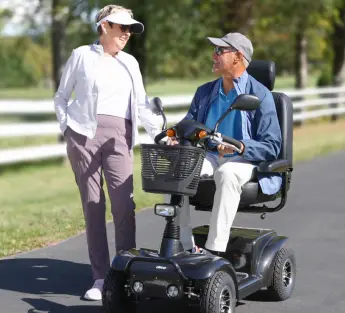

 Contact Us
Contact Us
 M-F 9am - 6pm ET
M-F 9am - 6pm ET
 Request parts
Request parts Request Service
Request Service

